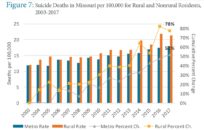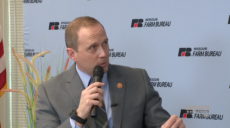JEFFERSON CITY, Mo. — An independent assessment of Missouri’s Medicaid program details significant changes that could result is the state saving between $500 million and $1 billion annually.
The 115-page report, released on Monday, outlines how adopting a value-based payment and care delivery models that reward providers for quality and efficiency of the total care delivered to patients could offer a long-term cost control method.
Launched last year in a push to control rising costs of Medicaid, the report was compiled by McKinsey & Co. for $2.7 million. The recommendations made are based on extensive interviews with state agency leaders and staff, detailed analysis of claims- and non-claims data, review of agency operations, and benchmarking against other states as well as Medicaid managed care organizations (MCOs) and other health insurers.
“Since October, a detailed assessment of the Missouri Medicaid program has uncovered a wide range of opportunities for improvement, which may collectively deliver substantial reductions in the rate of growth of Medicaid spending,” the report states.
Missouri’s Medicaid program is designed as a safety net for the state’s most vulnerable populations, providing health care and support for activities of daily living for nearly one million Missourians. Children in low-income families comprise 63.5 percent of participants, while persons with disabilities comprise the largest share of spending at 46 percent.
According to the report, Missouri’s Medicaid program is currently outdated in most aspects compared to other peer states.
State spending on Medicaid has grown significantly in recent years. The report notes from Fiscal Year 2009 to Fiscal Year 2018, Medicaid spending increased from 17 percent to 24 percent of general revenue funds.
“Based on continuation of these trends, spending could grow to 26 [percent] by FY 2023. This number could be even higher (30 percent) if Missouri were to experience an economic downturn, given the potential for such a downturn to increase Medicaid enrollment while also reducing growth in state general revenues,” states the report. “Significant changes in the structure and performance of Missouri’s Medicaid program would be necessary to bring Medicaid spending growth in line with projected economic growth of the state.”
The report projects that if the recommendations are implemented, Missouri could save between $500 million and $1 billion annually. Areas of cost-savings including from $250 million to $500 million in Acute Care Services initiatives, from $90 million to $275 million in Long-Term Services and Supports initiatives, from $35 million to $60 million in Pharmacy initiatives, from $65 to $100 million in Program Integrity initiatives, and from $175 million to $300 million in Managed Care-related initiatives.
“Broadly, the state could balance two approaches to controlling spending. One approach commonly adopted by both public programs and managed care would rely primarily on controlling the unit prices paid for services and seeking to curb utilization through broad-based utilization management. Such an approach could reduce costs in the short term. However, on its own such an approach may not provide incentives to improve outcomes,” states the report. “As an alternative approach, the state could seek to adopt value-based payment and care delivery models that reward providers for quality and efficiency of the total care delivered to patients. This approach may support more transformational changes in care delivery, with corresponding improvements in patient outcomes and experience. However, such an approach is likely to require a greater commitment of resources and will take longer to generate impact given the need for providers to adopt new capabilities and implement changes in clinical practices.”
Beyond the changes in reimbursement rates, the report recommendations a shift for more at-home care services and better management of prescription drug costs.
But the implementation of any of the initiatives would take careful planning and execution, as well as investments to support the transformation and build new capabilities.
“Key requirements for effective design and implementation of Medicaid transformation include: strong and visible executive leadership; effective stakeholder engagement; commitment to fact-based decision-making supported by robust data; upskilling of key agency staff; a well-resourced transformation office; and modernization of the program’s technological infrastructure,” states the report.
Read the full report below:
 Loading...
Loading...

Alisha Shurr was a reporter for The Missouri Times and The Missouri Times Magazine. She joined The Missouri Times in January 2018 after working as a copy editor for her hometown newspaper in Southern Oregon. Alisha is a graduate of Kansas State University.












